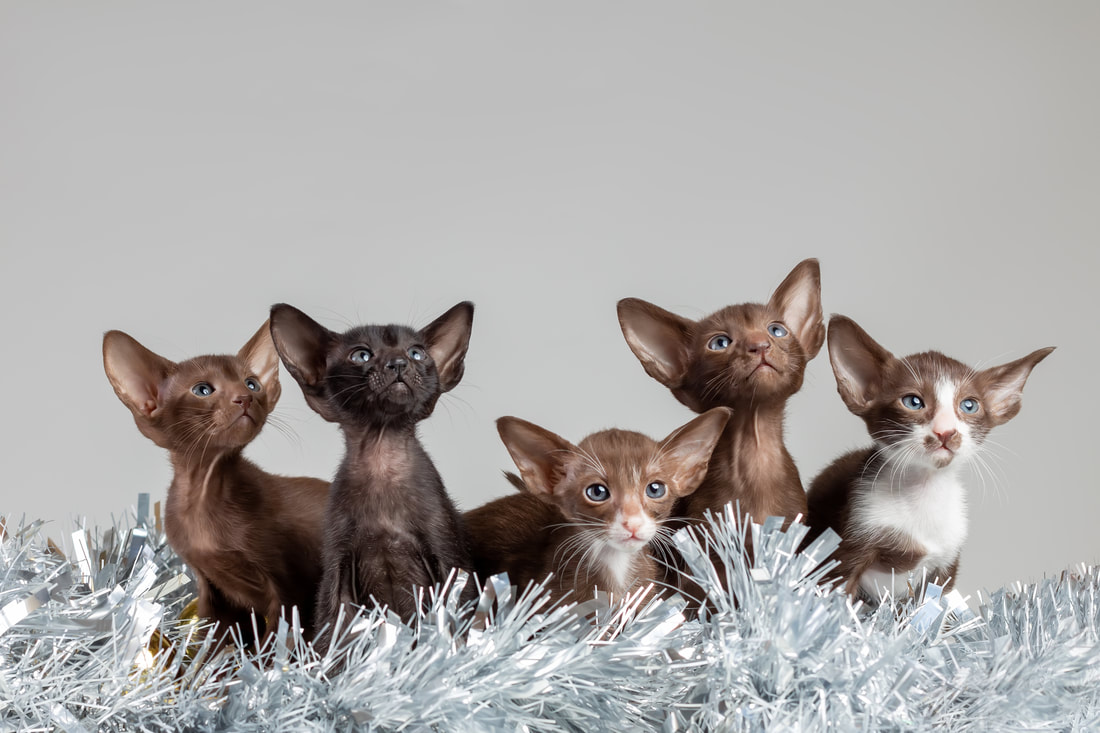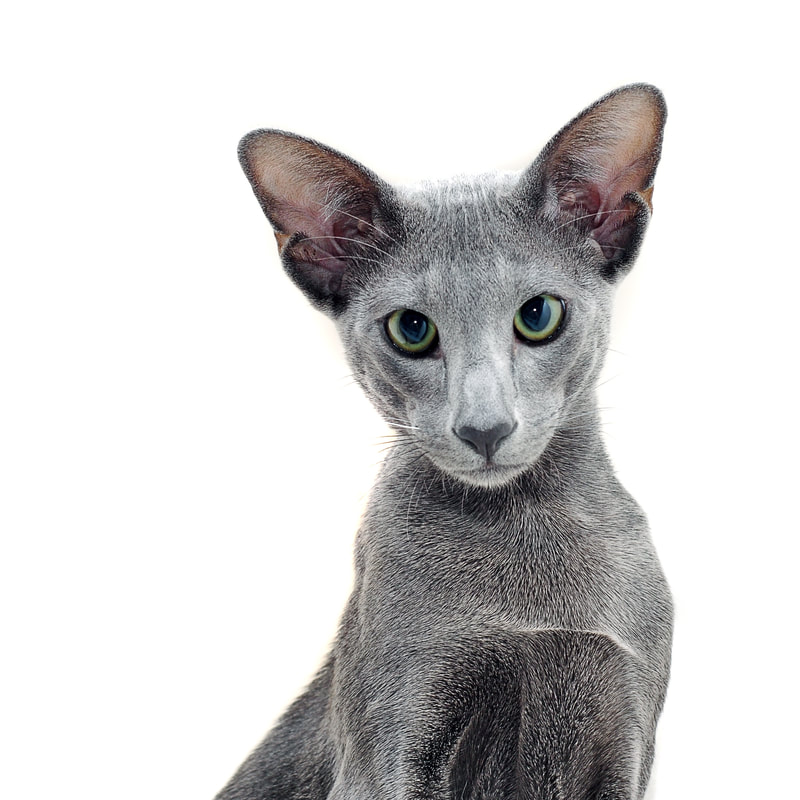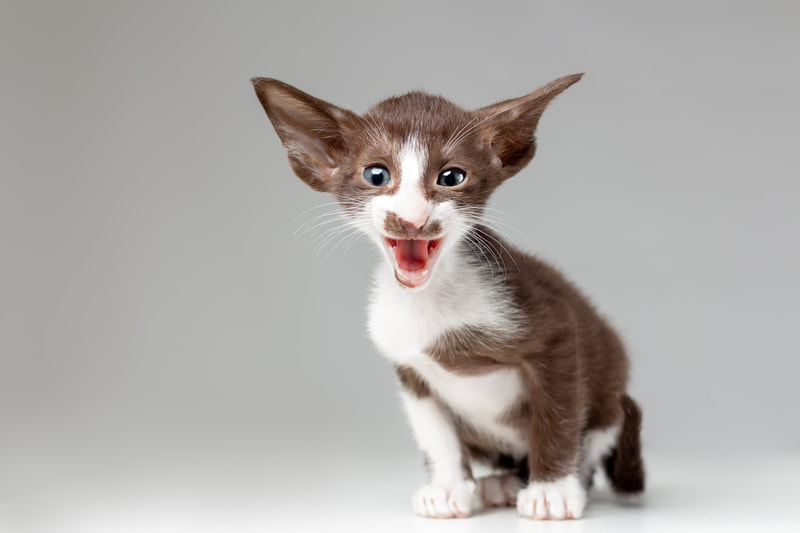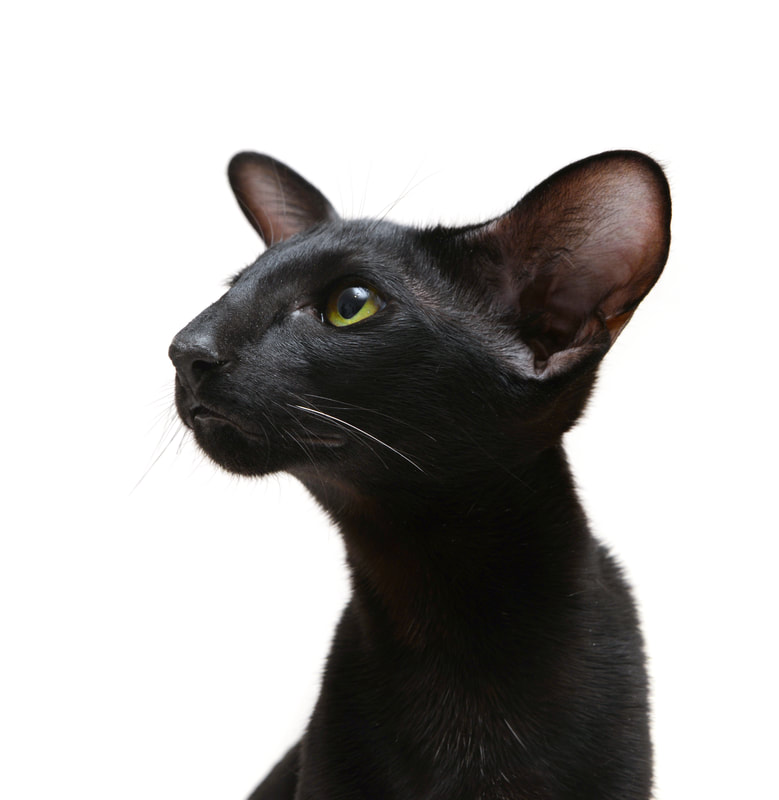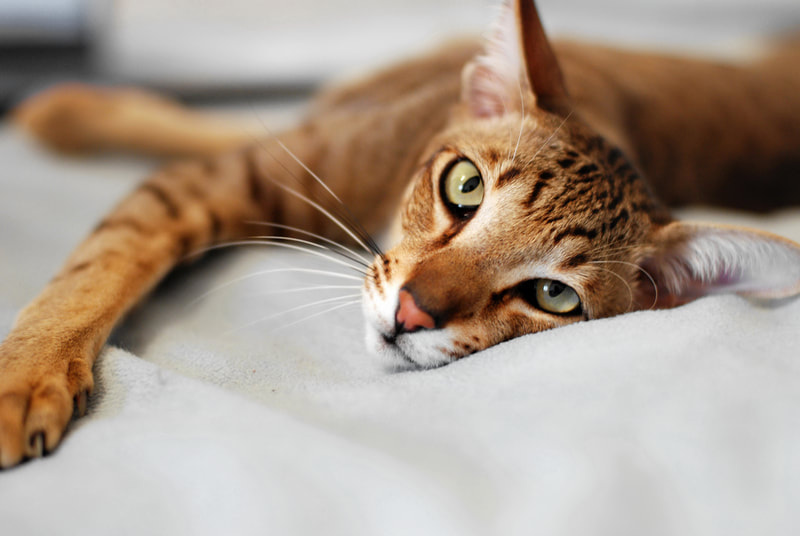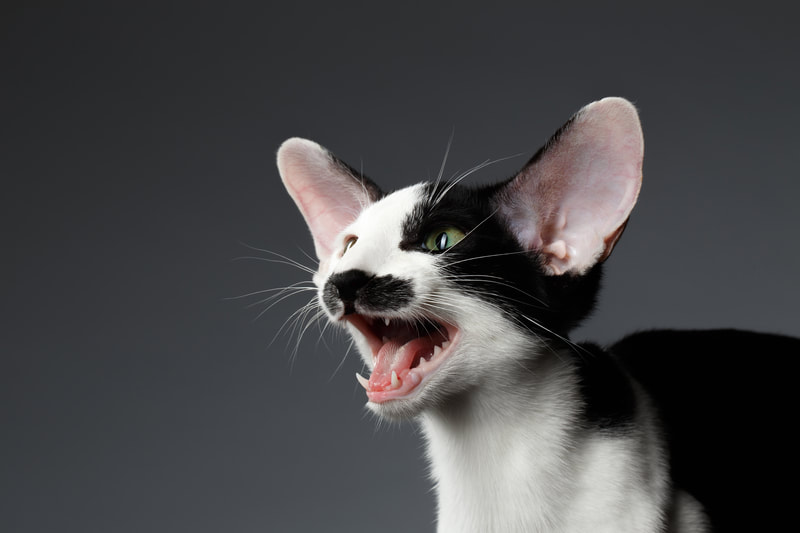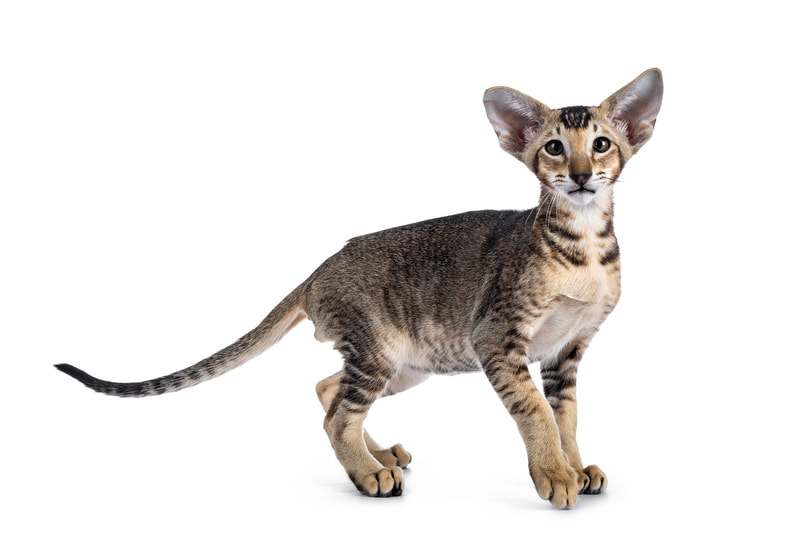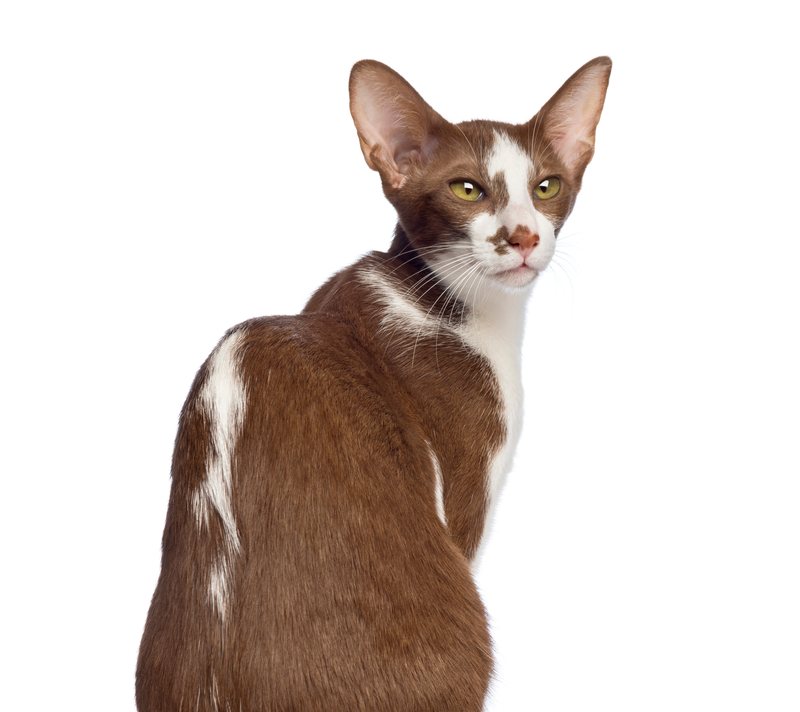Oriental Short Hair - the affectionate and intelligent beauty
Known for their intelligence and affection, the Oriental Shorthair enchants with their striking appearance. With their lively nature and affection, the oriental beauty takes every heart by storm, because their amiability makes the elegant velvet paw the perfect room-mate. The domestic cat breed, originally from Southeast Asia, emerged from the Siamese cat and is closely related to it. Breeding came about after the breed standards for the Siamese Cat excluded the breeding of fully coloured specimens from 1920 onwards. The breeding of the new breed began in many European countries before the Second World War and was advanced in England by crossing Siamese and domestic cats as well as Russian Blues. The Oriental Shorthair was officially recognized as a breed in 1958. Eye-catching “bat ears” and slightly slanted, almond-shaped eyes give the exotic-looking velvet paw its characteristic appearance. The distinctive, wedge-shaped head and straight nose give the furry friends a unique look with their bright green or blue eyes. The slim, medium-sized cats appear elegant and are covered in short, fine and close-fitting fur, which has hardly any undercoat and is characterized by its shine. While the short-haired cats, both plain and tortoiseshell and tabby, win everyone's hearts with their bright green eyes, white or cream-coloured OSH cats can come with bright blue eyes or one green and blue eye.
Oriental Shorthair – In a glance
Weight span:
Male: 3 - 5kg (6.6 lbs - 11 lbs)
Female: < 3 kg (< 6.6 lbs)
Eye colours:
Blue, Green, Odd-eyed
Fur:
Length: Short to medium
Feature: Flat
Colours: White (blue-eyed, green-eyed, odd-eyed)black (Ebony), blue, chocolate (Havana), lilac (Lavender), red, cream, cinnamon, fawn, caramel, apricot, silver (smoke)
Pattern: Pointed - solid, tortie, tabby, tortie-tabby, and also all colours with white
self, tortoishell (tortie), patched-tabby (tortie-tabby), parti-colour (bicolour,tricolour), blotched-tabby (classic-tabby), mackerel-tabby, spotted-tabby, ticked-tabby, shaded
Known for their intelligence and affection, the Oriental Shorthair enchants with their striking appearance. With their lively nature and affection, the oriental beauty takes every heart by storm, because their amiability makes the elegant velvet paw the perfect room-mate. The domestic cat breed, originally from Southeast Asia, emerged from the Siamese cat and is closely related to it. Breeding came about after the breed standards for the Siamese Cat excluded the breeding of fully coloured specimens from 1920 onwards. The breeding of the new breed began in many European countries before the Second World War and was advanced in England by crossing Siamese and domestic cats as well as Russian Blues. The Oriental Shorthair was officially recognized as a breed in 1958. Eye-catching “bat ears” and slightly slanted, almond-shaped eyes give the exotic-looking velvet paw its characteristic appearance. The distinctive, wedge-shaped head and straight nose give the furry friends a unique look with their bright green or blue eyes. The slim, medium-sized cats appear elegant and are covered in short, fine and close-fitting fur, which has hardly any undercoat and is characterized by its shine. While the short-haired cats, both plain and tortoiseshell and tabby, win everyone's hearts with their bright green eyes, white or cream-coloured OSH cats can come with bright blue eyes or one green and blue eye.
Oriental Shorthair – In a glance
Weight span:
Male: 3 - 5kg (6.6 lbs - 11 lbs)
Female: < 3 kg (< 6.6 lbs)
Eye colours:
Blue, Green, Odd-eyed
Fur:
Length: Short to medium
Feature: Flat
Colours: White (blue-eyed, green-eyed, odd-eyed)black (Ebony), blue, chocolate (Havana), lilac (Lavender), red, cream, cinnamon, fawn, caramel, apricot, silver (smoke)
Pattern: Pointed - solid, tortie, tabby, tortie-tabby, and also all colours with white
self, tortoishell (tortie), patched-tabby (tortie-tabby), parti-colour (bicolour,tricolour), blotched-tabby (classic-tabby), mackerel-tabby, spotted-tabby, ticked-tabby, shaded
The cats shown here are NOT members of the breeding cattery Munotglöggli, the intention is to provide an overview of the different coat patterns

